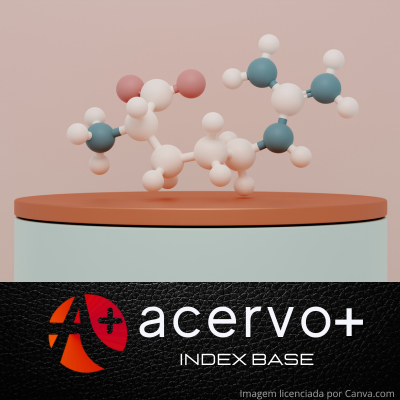Biopolímero de araruta (Maranta arundinacea L.) como matriz promissora para incorporação de compostos bioativos e outras aplicações
##plugins.themes.bootstrap3.article.main##
Resumo
Objetivo: Elencar e analisar estudos que investigaram o uso do biopolímero araruta (Maranta arundinacea L.) como matriz inovadora no desenvolvimento de produtos tecnológicos para incorporação de bioativos, com foco em aplicações biomédicas, farmacêuticas e tecnológicas. Métodos: A seleção de artigos foi realizada nas bases PubMed, Scielo e Scopus, considerando publicações entre 2013 e 2023. Foram incluídos 12 estudos na revisão final a partir da aplicação critérios de inclusão e exclusão, garantindo a relevância e a qualidade dos estudos selecionados para análise. Resultados: Observou-se que a araruta é utilizada principalmente na incorporação de óleos essenciais, extratos vegetais e polissacarídeos para o desenvolvimento de embalagens biodegradáveis e bioativas, filmes comestíveis nutritivos e membranas poliméricas cicatrizantes. Esses estudos ressaltam o potencial da araruta para promover funcionalidade e sustentabilidade em produtos biomédicos e farmacêuticos. Considerações finais: Este estudo destaca a araruta como uma matriz promissora e de baixo custo para inovação em biomateriais, incentivando o avanço das pesquisas e aplicações práticas nessa área.
##plugins.themes.bootstrap3.article.details##
Copyright © | Todos os direitos reservados.
A revista detém os direitos autorais exclusivos de publicação deste artigo nos termos da lei 9610/98.
Reprodução parcial
É livre o uso de partes do texto, figuras e questionário do artigo, sendo obrigatória a citação dos autores e revista.
Reprodução total
É expressamente proibida, devendo ser autorizada pela revista.
Referências
2. AMANTEPR, et al. Benefits and possible food applications of arrowroot (Maranta arundinacea L.). Journal of Culinary Science & Technology, v. 19, n. 6, p. 513-521, 2021.
3. CHARLESAL, et al. Functional properties of arrowroot starch in cassava and sweet potato composite starches. Food Hydrocolloids, v. 53, p. 187-191, 2016.
4. CHASSENIEUX C, et al. Biopolymers: State of the art, new challenges, and opportunities. In: THOMAS S, et al. (Eds.). Handbook of Biopolymer-Based Materials: From Blends and Composites to Gels and Complex Networks. Weinheim: Wiley-VCH, 2013; 988p.
5. DÍAZ-MONTES EeCASTRO-MUÑOZR. Edible films and coatings as food-quality preservers: An overview. Foods,2021; 10(2): e249.
6. FAKHOURI FM, et al. Bioactive edible films based on arrowroot starch incorporated with cranberry powder: Microstructure, thermal properties, ascorbic acid content and sensory analysis. Polymers, 2019; 11(10): e1650.
7. GEORGE A, et al. A comprehensive review on chemical properties and applications of biopolymers and their composites. International journal of biological macromolecules, 2020; 154: 329-338.
8. HOOVERR. Composition, molecular structure, and physicochemical properties of tuber and root starches: a review. Carbohydrate Polymers, v. 45, n. 3, p. 253-267, 2001.
9. LUNANKM, SAKAMN. Maranta in Flora do Brasil, 2020. Jardim Botânico do Rio de Janeiro. Disponível em:https://floradobrasil2020.jbrj.gov.br/FB599505.
10. MALKIMKS, et al. Characterization of arrowroot (Maranta arundinacea) starch as a potential starch source for the food industry. Heliyon, v. 9, n. 9, 2023.
11. MENEZES FILHO ACP, et al. Biodegradable films of arrowroot starch (Maranta arundinacea) incorporated with floral extract of Tabebuia impetiginosa and copper sulfate: physical and physicochemical properties, and biodegradability and antibacterial activities. Brazilian Journal of Science, 2022a; 1(2): 46-58.
12. MENEZES FILHOACP, et al. Incorporation of Oil From Hymenaea stigonocarpa and Hymenaea courbaril Into Biofilms Made From Arrowroot Starch: Physicochemical, Biodegradability and Antifungal Activity. Journal of Agricultural Science, 2022b; 14(4): 156-169.
13. MIRANDA ÍKSPB, et al. Development of membranes based on carboxymethyl cellulose/acetylated arrowroot starch containing bromelain extract carried on nanoparticles and liposomes. Journal of Pharmaceutical Sciences, 2021; 110(6): 2372-2378.
14. NEVESMCP, et al. Araruta: Resgate de um cultivo tradicional. Embrapa, 2005.
15. NOGUEIRA GF, et al. Extraction and characterization of arrowroot (Maranta arundinacea L.) starch and its application in edible films. Carbohydrate Polymers, v. 186, p. 64-72, 2018.
16. NOGUEIRAGF, et al. Development and characterization of arrowroot starch films incorporated with grape pomace extract. Polysaccharides, 2022; 3(1): 250-263.
17. NOGUEIRA GF, et al. Active edible films based on arrowroot starch with microparticles of blackberry pulp obtained by freeze-drying for food packaging. Polymers, 2019; 11(9): e1382.
18. OLIVEIRA FILHO JG, et al. Arrowroot starch-based films incorporated with a carnauba wax nanoemulsion, cellulose nanocrystals, and essential oils: A new functional material for food packaging applications. Cellulose, 2021; 28 (10): 6499-6511.
19. PACHECOMS, et al. A review on orally disintegrating films (ODFs) made from natural polymers such as pullulan, maltodextrin, starch, and others. International Journal of Biological Macromolecules, 2021; 178: 504-513.
20. ROCHA AA, et al. Edible Films Based on Arrowroot (Maranta arundinacea L.) Starch Incorporated with Licuri Oil (Syagrus coronata) and Tween 80. Journal of Polymers and the Environment, 2022; 30(11): 4821-4834.
21. SANDOVAL GORDILLO CA, et al. Physicochemical characterization of arrowroot starch (Maranta arundinacea) and glycerol/arrowroot starch membranes. International Journal of Food Engineering, v. 10, n. 4, p. 727-735, 2014.
22. SANTOS LS, et al. Ethanolic extract from Capsicum chinense Jacq. ripe fruits: phenolic compounds, antioxidant activity and development of biodegradable films. Food Science and Technology, 2020; 41(2): 497-504.
23. SHEIKH MA, et al. Harnessing plum (Prunus domestica L.) processing wastes for the fabrication of bio-composite edible films: An attempt towards a food circular bioeconomy. Food Hydrocolloids, 2023; 142: e108790.
24. SI, C et al. Natural Biopolymers: Property, Modifications and Applications in Pharmaceutical Fields. Current Medicinal Chemistry, 2021; 28(40): 8239-8242.
25. TARIQUE J, et al. Recent developments in sustainable arrowroot (Maranta arundinacea Linn) starch biopolymers, fibres, biopolymer composites and their potential industrial applications: A review. Journal of Materials Research and Technology, 2021; 13: 1191-1219.
26. VALADARES ACF, et al. Incorporation of essential oils from Piper aduncum into films made from arrowroot starch: effects on their physicochemical properties and antifungal activity. Química Nova, 2020; 43(6): 729-737.

